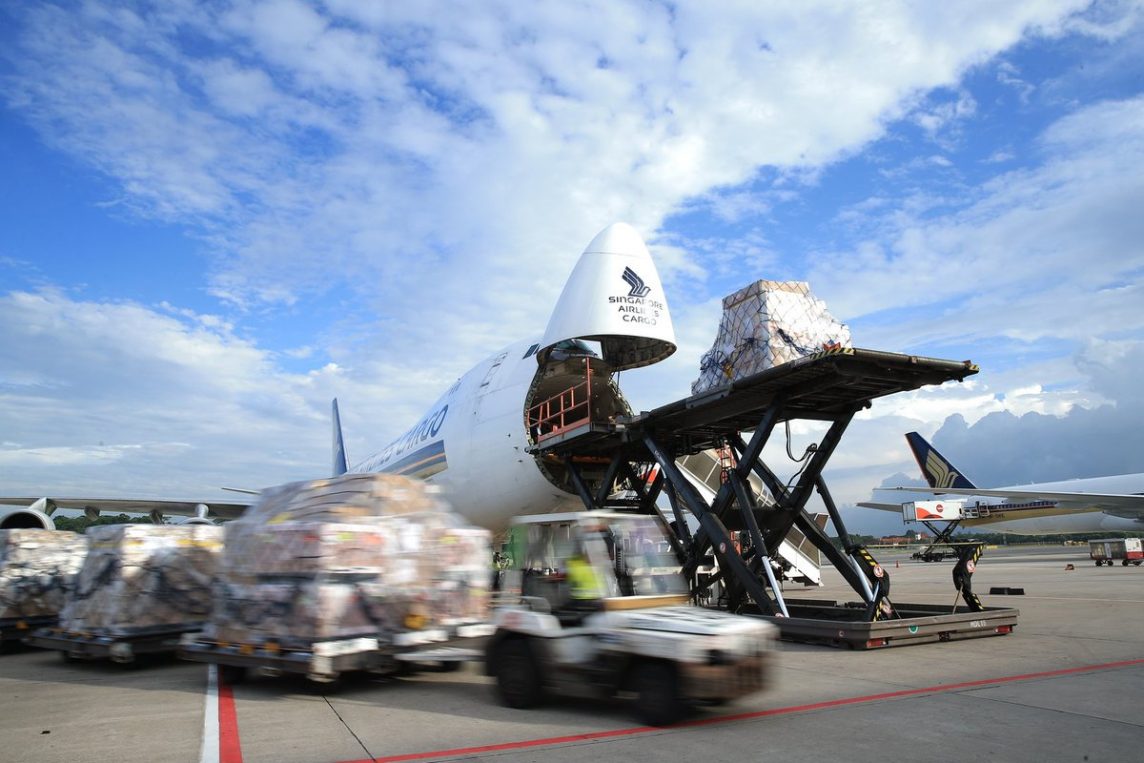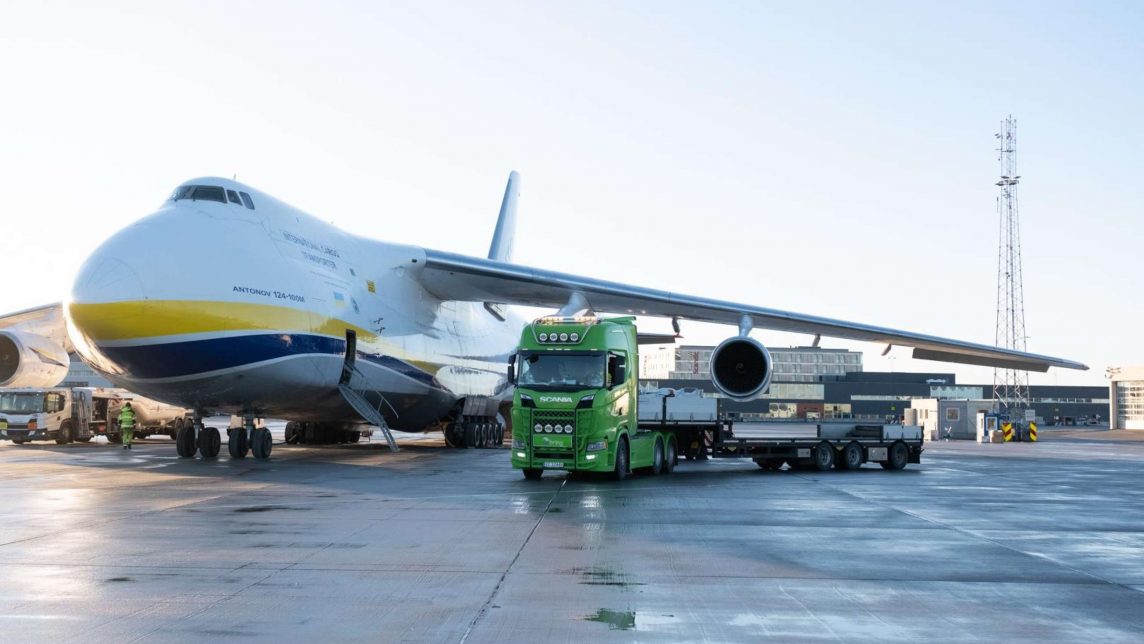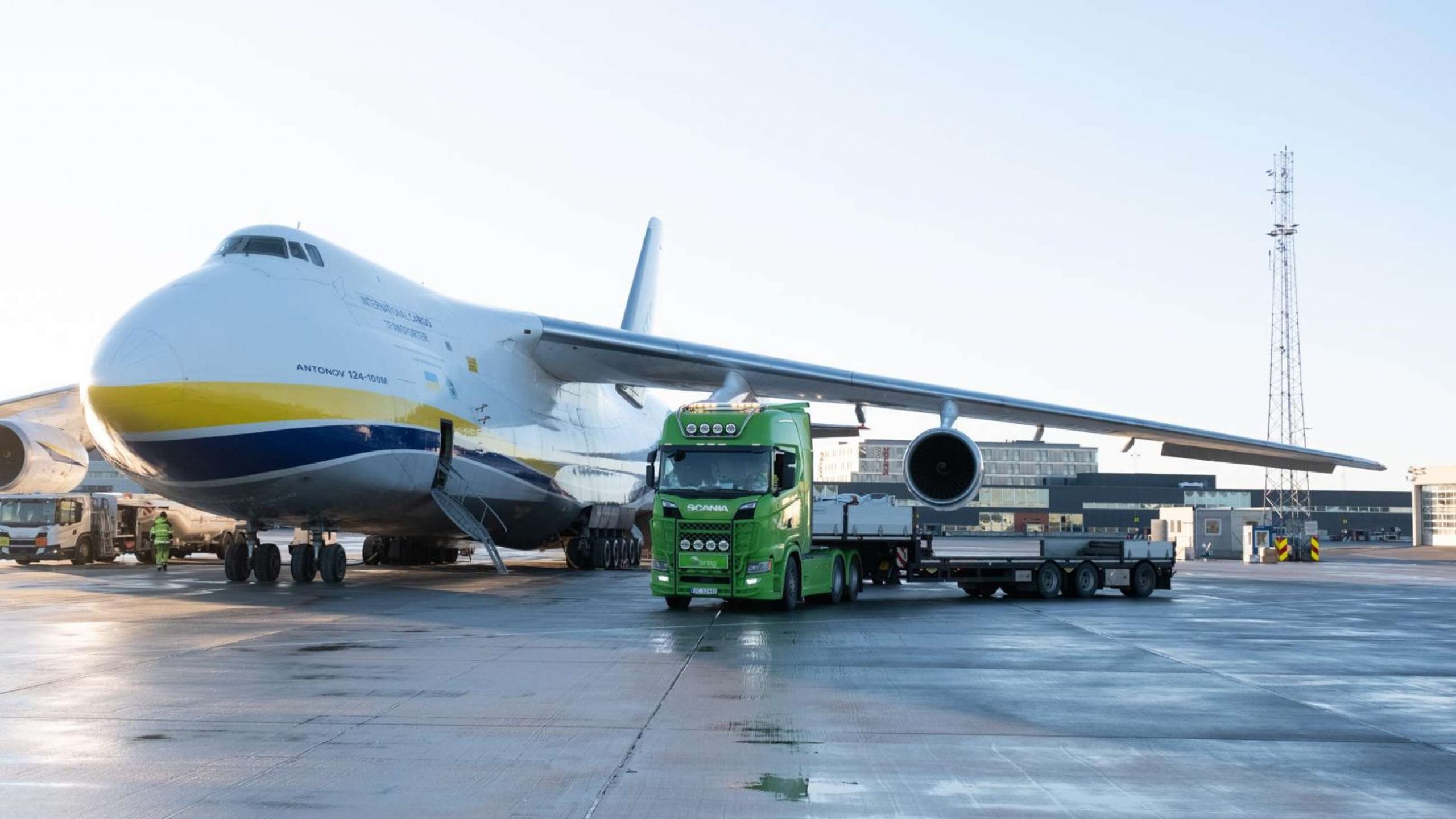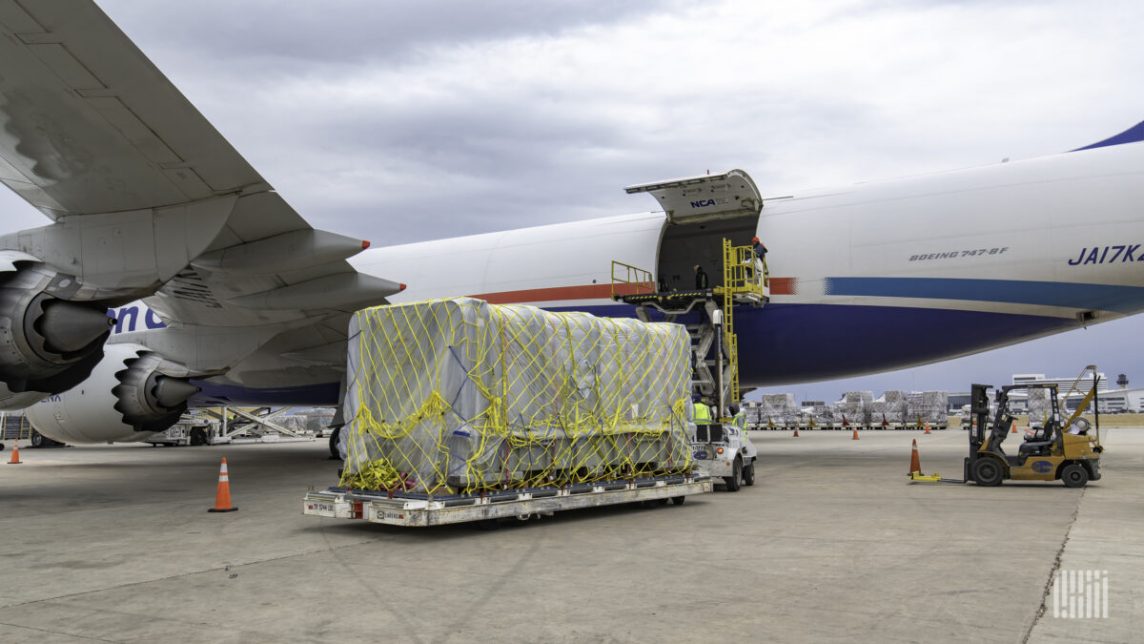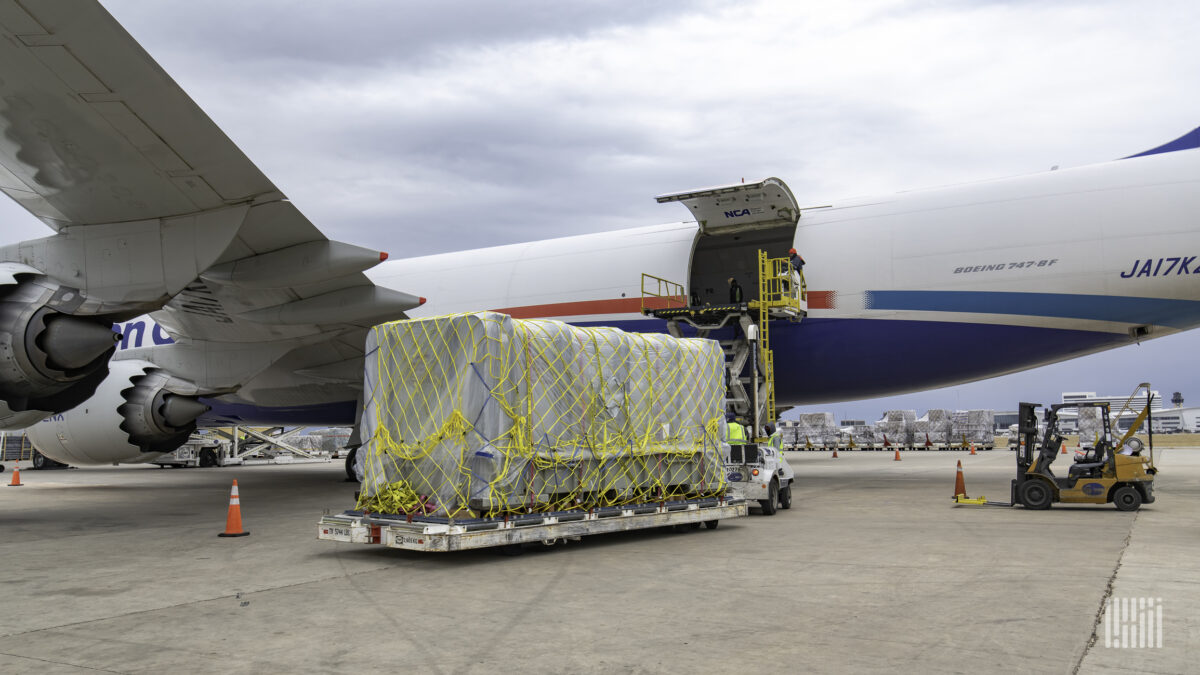Air Waybill
An AWB is a bill of lading which covers both domestic and international flights transporting goods to a specified destination. Technically, it is a non-negotiable instrument of air transport which serves as a receipt for the shipper, indicating that the carrier has accepted the goods listed therein and obligates itself to carry the consignment to the airport of destination according to specified conditions. Normally AWB refers to the Air Waybill issued by carrying airlines and also called Master Air Waybill (MAWB) which comes with three digits of numeric airline identification codes issued by IATA to non-U.S. based airlines and Air Transport Association of America to U.S. based airlines. However, air freight forwarders also issue HAWB (House Air Waybill) to their customers for each of the shipments.
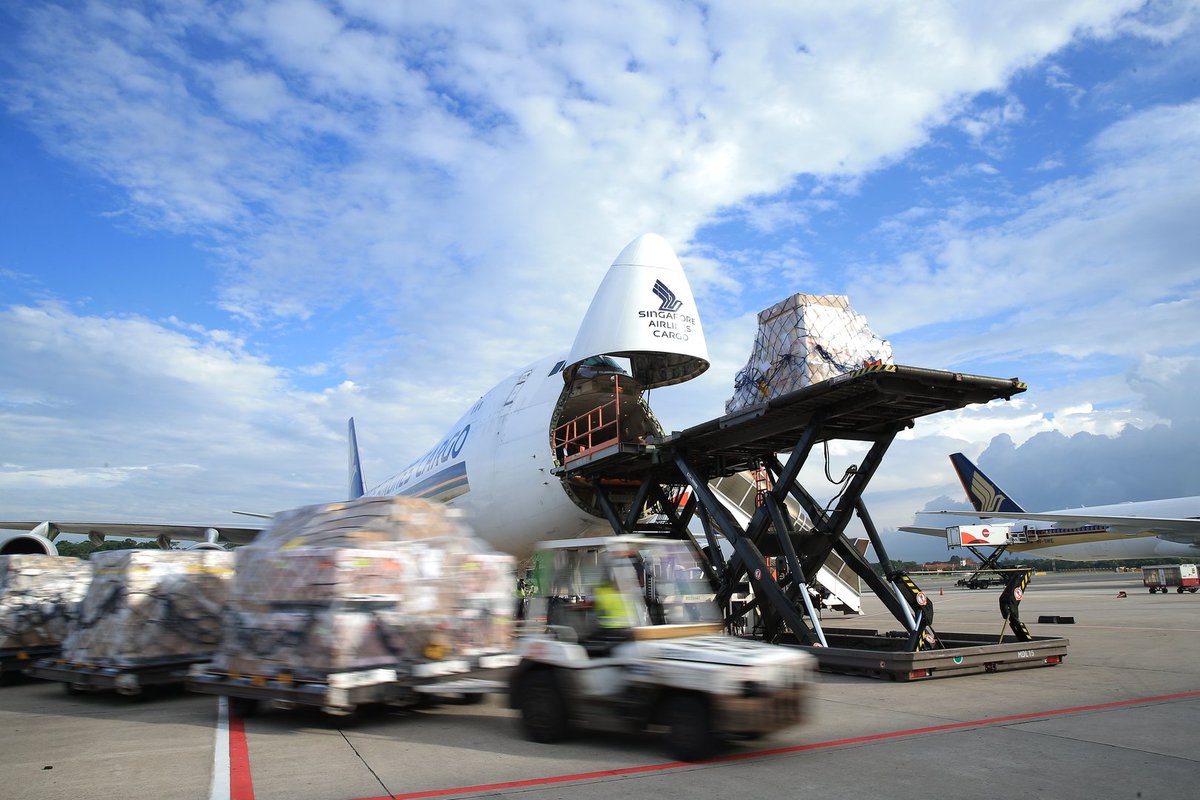
Aircraft Container
A unit load device (ULD) which links directly with the airplane cargo handling and restraint system.
Allotment
A term used to describe blocked space by airlines on behalf of forwarders/shippers.
ATA
Actual Time of Arrival, or Airport-To-Airport, or Air Transport Association of America.
ATD
Actual Time of Departure.
Bonded Warehouse
The Customs Service authorizes bonded warehouses for storage or manufacture of goods on which payment of duties is deferred until the goods enter the Customs Territory. The goods are not subject to duties if re-shipped to foreign points.
Break Bulk (B/B)
For consolidated air freight, it is moved under one MAWB and each consignment designated to specific consignee or recipient is under one HAWB. When freight forwarder receives the consolidated cargo from carrier, they will break the consolidation apart per HAWB then proceed customs clearance along with associated shipping and import documents. Such Break-Bulk is normally handled by airlines or their contracted ground handling agent.
Carnet
A customs document permitting the holder to carry or send merchandise temporarily into certain foreign countries for display, demonstration or other purposes without paying import duties or posting bonds.
Combi Aircraft
An aircraft configured to carry both passengers and cargo on the Main Deck.
Consignment
Delivery of merchandise from an exporter (the consignor) to an agent (the consignee) under agreement that the agent sell the merchandise for the account of the exporter. The consignor retains title to the goods until sold. The consignee sells the goods for commission and remits the net proceeds to the consignor.
Consolidation
In order to handle small lot of consignment efficiently and competitively, freight forwarder usually put many consignments into one lot then tender to carrier for forwarding. In this case, each consignment will be shipped with one HAWB respectively and all of them will be under one master AWB.
Customs
The government authorities designated to collect duties levied by a country on imports and exports.
Customs Broker
An individual or company licensed by the government to enter and clear goods through Customs. The U.S. Customs Service defines a Customs Broker, as any person who is licensed in accordance with Part III of Title 19 of the Code of Federal Regulations (Customs regulations) to transact Customs business on behalf of others. Customs business is limited to those activities involving transactions with Customs concerning the entry and admissibility of merchandise; its classification and valuation; the payment of duties, taxes, or other charges assessed or collected by Customs upon merchandise by reason of its importation, or the refund, rebate, or drawback thereof.
Customs Clearance
The procedures involved in getting cargo released by Customs through designated formalities such as presenting import license/permit, payment of import duties and other required documentations by the nature of the cargo such as FCC or FDA approval.
Customs Invoice
A document, required by some foreign countries’ customs officials to verify the value, quantity, and nature of the shipment, describing the shipment of goods and showing information such as the consignor, consignee, and value of the shipment.
Dangerous Goods
Commodities classified by IATA according to its nature and characteristic in terms of the effect of its danger to carrier’s flying safety.
DDP
Deliver Duty Paid.
DDU
Deliver Duty Unpaid.
Dimensional Weight
Carrier charge for freight based on the dimensional weight or actual gross weight whichever is higher.
Direct Ship
Ship without consolidation and under one MAWB i.e. non-consolidation.
Drawback
Drawback is a rebate by a government, in whole or in part, of customs duties assessed on imported merchandise that is subsequently exported. Drawback regulations and procedures vary among countries.
Duty
A tax imposed on imports by the customs authority of a country. Duties are generally based on the value of the goods, some other factors such as weight or quantity (specific duties), or a combination of value and other factors (compound duties).
EDI
EDI, Electronic Data Interchange for Administration, Commerce, and Transportation, is an international syntax used in the interchange of electronic data. Customs uses EDI to interchange data with the importing trade community.
ETA
Estimated Time of Arrival. Then, It normally takes 3 hours for carriers to Break Bulk then ready to be picked up by forwarders along with customs release notification.
ETD
Estimated Time of Departure. The cut-off time for carriers’ cargo ramp handling is normally two hours ahead of ETD. However, the freight forwarders’ consolidation cut-off time may vary depending on each forwarder’s operations respectively.
Freight Carriage … paid to
Like C & F, “Freight/Carriage paid to …” means that the seller pays the freight for the carriage of the goods to the named destination. However, the risk of loss of or damage to the goods, as well as of any cost increases, is transferred from the seller to the buyer when the goods have been delivered into the custody of the first carrier and not at the ship’s rail. The term can be used for all modes of transport including multi-modal operations and container or “roll on-roll off” traffic by trailer and ferries. When the seller has to furnish a bill of lading, waybill or carrier’s receipt, he duly fulfills this obligation by presenting such a document issued by the person with whom he has contracted for carriage to the named destination. (Also see incoterms)
Freight Carriage … and Insurance paid to
This term is the same as “Freight/Carriage Paid to …” but with the addition that the seller has to procure transport insurance against the risk of loss of damage to the goods during the carriage. The seller contracts with the insurer and pays the insurance premium.
Gateway
In the context of travel activities, gateway refers to a major airport or seaport. Internationally, gateway can also mean the port where customs clearance takes place.
Harmonized System
The Harmonized Commodity Description and Coding System (or Harmonized System, HS) is a system for classifying goods in international trade, developed under the auspices of the Customs Cooperation Council. Beginning on January 1, 1989, the new HS numbers replaced previously adhered-to schedules in over 50 countries, including the United States.
HAWB
House Air waybill issued by carrying airlines’ agent, normally freight forwarder.
IATA
International Air Transport Association (IATA), established in 1945, is a trade association serving airlines, passengers, shippers, travel agents, and governments. The association promotes safety, standardization in forms (baggage checks, tickets, weigh bills), and aids in establishing international airfares. IATA headquarter is in Geneva, Switzerland.
IATA Designator
Two-character Airline identification assigned by IATA in accordance with provisions of Resolution 762. It is for use in reservations, timetables, tickets, tariffs as well as air waybill.
Import Certificate
The import certificate is a means by which the government of the country of ultimate destination exercises legal control over the internal channeling of the commodities covered by the import certificate.
Import License
A document required and issued by some national governments authorizing the importation of goods. Also referred as import permit. With such documentation, customs clearance can be conducted.
Import Restrictions
Import restriction, applied by a country with an adverse trade balance (or for other reasons), reflect a desire to control the volume of goods coming into the country from other countries may include the imposition of tariffs or import quotas, restrictions on the amount of foreign currency available to cover imports, a requirement for import deposits, the imposition of import surcharges, or the prohibition of various categories of imports.
Incoterms
Maintained by the International Chamber of Commerce (ICC), this codification of terms is used in foreign trade contracts to define which parties incur the costs and at what specific point the costs are incurred. (also see incoterm section)
Insurance Certificate
This certificate is used to assure the consignee that insurance is provided to cover loss of or damage to the cargo while in transit.
Intermediate Consignee
An intermediate consignee is the bank, forwarding agent, or other intermediary (if any) that acts in a foreign country as an agent for the exporter, the purchaser, or the ultimate consignee, for the purpose of effecting delivery of the export to the ultimate consignee.
Intermodal
Movement of goods by more than one mode of transport, i.e. airplane, truck, railroad and ship.
LD3
Lower deck type 3 container. This is the most commonly used container in passenger aircraft.
Lower Deck
The compartment below the Main Deck (also synonymous with lower hold and lower lobe).
Main Deck
The deck on which the major portion of payload is carried, normally known as Upper Deck of an airplane. The full cargo freighter aircraft has it entire upper deck equipped for main deck type of containers/pallets while Combi aircraft uses it rear part of the upper deck for cargo loading. There is no upper deck or main deck type of container/pallet at passenger aircraft.
NVD
No Value Declared.
Packing List
A shipping document issued by shipper to carrier, Customs and consignee serving the purposes of identifying detail information of package count, products count, measurement of each package, weight of each package, etc.
POD
Proof Of Delivery, or a cargo/package receipt with the signature of recipient. This term has been widely used in courier and express industry and also gaining more attention and implementation at air cargo industry..
Pro Forma Invoice
An invoice provided by a supplier prior to the shipment of merchandise, informing the buyer of the kinds and quantities of goods to be sent, their value, and important specifications (weight, size, and similar characteristics). When an importer applies for Letter of Credit as the means of payment, a Pro Forma Invoice from the beneficiary of such Letter of Credit, usually the exporter, is required by the L/C issuing bank.
Shipping Mark
The letters, numbers or other symbols placed on the outside of cargo to facilitate identification.
Shipping Weight
Shipping weight represents the gross weight in kilograms of shipments, including the weight of moisture content, wrappings, crates, boxes, and containers (other than cargo vans and similar substantial outer containers).
TACT
TACT stands for The Air Cargo Tariff. It is published by IAP — International Airlines Publications, an IATA company.
Tare Weight
The weight of a ULD and tie down materials without the weight of the goods it contains.
Temporary Importation under Bond
When an importer makes entry of articles and claimed to be exempt from duty under Chapter 98, Subchapter XIII, Harmonized Tariff Schedule of the United States, a bond is posted with Customs which guarantees that these items will be exported within a specified time frame (usually within one year from the date of importation). Failure to export these items makes the importer liable for the payment of liquidated damages for breach of the bond conditions.
Transshipment
Transshipment refers to the act of sending an exported product through an intermediate country before routing it to the country intended to be its final destination.
ULD
Unit Load Device, Any type of container, container with integral pallet, aircraft container or aircraft pallet.
Ultimate Consignee
The ultimate consignee is the person located abroad who is the true party in interest, receiving the export for the designated end-use.
Value for Customs Purposes Only
The U.S. Customs Service defines “value for Customs purposes only” as the value submitted on the entry documentation by the importer which may or may not reflect information from the manufacturer but in no way reflects Customs appraisement of the merchandise.
Without Reserve
A term indicating that a shipper’s agent or representative is empowered to make definitive decisions and adjustments abroad without approval of the group or individual represented.
